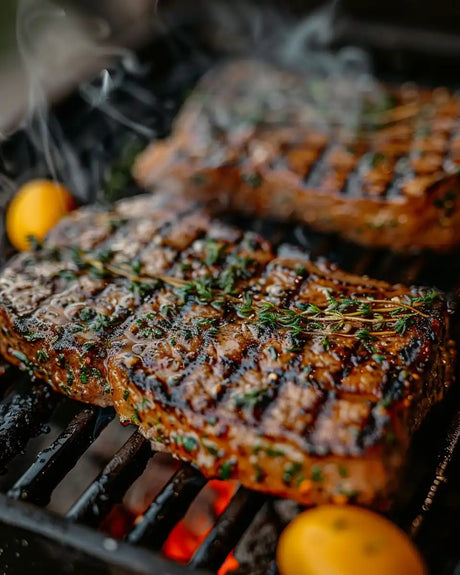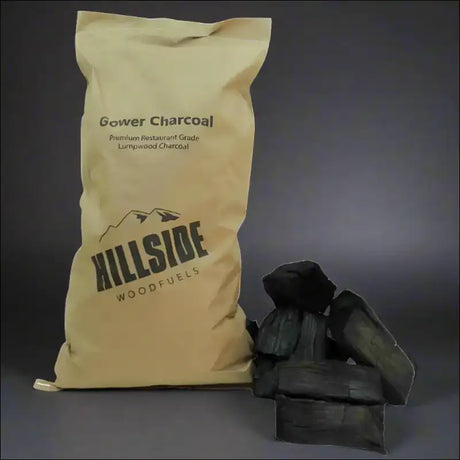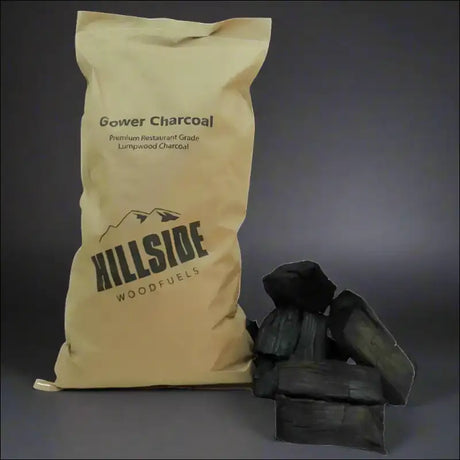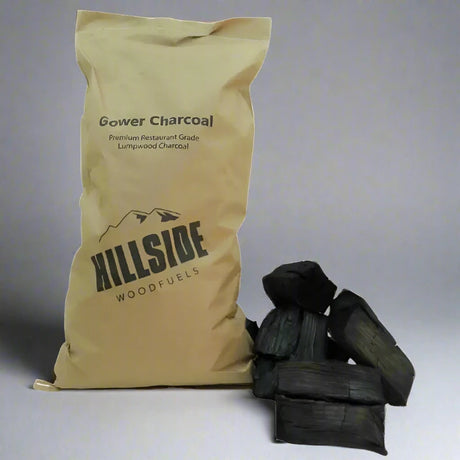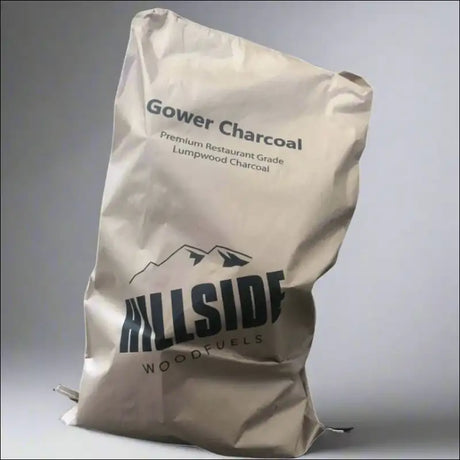Charcoal grilling is a time-honored tradition that combines the primal allure of fire with the culinary delight of perfectly cooked food. This guide is designed to equip beginners with the fundamental knowledge and tools required to embark on their charcoal grilling journey. From understanding the nuances of charcoal types and grill anatomy to mastering the art of fire management and flavor enhancement, we'll cover everything you need to turn your backyard into a grilling oasis. Let's dive into the essentials and transform you into a charcoal grilling aficionado.
Key Takeaways
- Grasping the differences between lump charcoal and briquettes, along with the structure of a charcoal grill, is crucial for effective temperature control and safety.
- Investing in the right grill and essential accessories like tongs, spatulas, and cleaning tools can significantly enhance the grilling experience and outcome.
- Learning proper lighting techniques, such as using a chimney starter, and managing the grill's fire are key to consistent cooking and extending the life of charcoal.
- Understanding how to marinate and season different foods, along with mastering grilling times and techniques, is essential for achieving the perfect doneness and flavor.
- Exploring beyond the basics by incorporating wood smoke, trying creative recipes, and hosting grilling parties can elevate the charcoal grilling experience to new heights.
Understanding the Basics of Charcoal Grilling
Types of Charcoal: Lump vs Briquettes
When we embark on the journey of charcoal grilling, choosing the right type of charcoal is crucial. Lump charcoal is the purest form, made from hardwood without additives, offering a high-heat, quick-burning option for searing steaks or grilling at high temperatures. On the other hand, briquettes are uniform in shape and size, made from compressed charcoal fines and binders, which provide a consistent, longer-lasting burn ideal for extended cooking sessions.
- Lump Charcoal: Quick to light, burns hot, less ash
- Briquettes: Consistent burn, longer-lasting, more ash
Both types have their merits, and often the choice comes down to personal preference and the specific grilling task at hand. For a quick sear, lump charcoal is your friend, while briquettes are the go-to for slow-cooked barbecue.
Remember, the type of charcoal you choose will affect the flavor of your food, the heat of your grill, and the overall grilling experience. Experiment with both to find your preferred style and to master the art of charcoal grilling.
The Anatomy of a Charcoal Grill
When we talk about charcoal grilling, understanding the anatomy of your grill is crucial. A charcoal grill typically consists of several key components that work together to give you the perfect grilling experience. The grill grate is where the magic happens, directly holding your food over the heat. Below that, the charcoal grate supports the burning charcoal, and it's essential for proper airflow.
The firebox is the compartment that contains the charcoal, and it's designed to withstand high temperatures. It's important to familiarize ourselves with these parts, as they are integral to the grilling process and affect everything from heat distribution to cooking times.
- Lid: Traps heat and smoke, also contains vents for temperature control
- Vents: Allow you to adjust the airflow, which in turn controls the grill's temperature
- Ash catcher: Collects ash for easy cleanup
Remember, the construction and material of your grill can greatly influence your grilling experience. A well-insulated grill retains heat better and can save you charcoal in the long run.
Temperature Control and Ventilation
We understand that maintaining the right temperature is crucial for the perfect grill. Controlling the heat is not just about the amount of charcoal you use; it's also about how you manage the airflow. The vents on your grill are there for more than just decoration; they're essential for regulating temperature. Open the vents to increase oxygen flow and raise the temperature, or close them to reduce the heat.
Ventilation is key to preventing flare-ups and ensuring even cooking. By adjusting the vents, you can create different heat zones on your grill, which is especially useful when cooking different types of food at the same time. Here's a simple guide to help you understand vent positions and their effects on grilling temperature:
- Fully Open: Maximizes airflow, increasing the grill temperature.
- Half Open: Offers a balance, suitable for moderate cooking temperatures.
- Slightly Open: Minimizes airflow, reducing the temperature for slow cooking.
- Closed: Extinguishes the fire by cutting off oxygen, used after cooking.
Remember, the type of charcoal you use also affects temperature control. Restaurant grade charcoal, for example, is high-quality charcoal that provides consistent heat and minimal pollution, making it an excellent choice for grilling.
Always keep a close eye on the temperature gauge if your grill has one, and don't forget to adjust the vents as needed throughout the cooking process. It's a simple yet effective way to ensure your food is grilled to perfection.
Safety Tips for Charcoal Grilling
When we gather around the grill, safety is paramount. Always keep a fire extinguisher or a bucket of sand nearby in case of unexpected flare-ups. It's not just about being cautious; it's about ensuring everyone can enjoy the barbecue without any mishaps.
Before lighting the grill, we make sure to set it up in an open, well-ventilated area, away from overhanging branches or structures. The placement of the grill is crucial to prevent any accidental fires.
- Never leave the grill unattended while it's hot.
- Keep children and pets at a safe distance.
- Use long-handled tools to avoid burns.
- Dispose of charcoal ash properly once it has completely cooled.
Remember, the key to a successful grilling experience is a blend of vigilance and preparation. By following these safety tips, we're not just cooking; we're caring for the well-being of our friends and family.
Essential Tools and Accessories
Choosing the Right Grill
When we embark on the journey of charcoal grilling, selecting the perfect grill is a pivotal first step. The right grill should match our lifestyle, space, and grilling ambitions. Whether we're looking for something portable for camping trips or a stationary centerpiece for our backyard, there's a grill out there that's ideal for us.
Size, build quality, and additional features are key factors to consider. Here's a quick rundown of the types of grills we might encounter:
- Kettle Grills: Classic design, great for beginners.
- Barrel Grills: Larger cooking surface, suited for big gatherings.
- Ceramic Grills: Excellent heat retention, perfect for slow cooking.
- Portable Grills: Compact and easy to transport, ideal for picnics.
Remember, the best grill for us is one that fits our unique needs and makes the grilling experience enjoyable and hassle-free.
It's also worth considering the material of the grill grates. Cast iron grates retain heat well and create beautiful sear marks, while stainless steel grates are rust-resistant and easier to clean. Ultimately, the choice is ours, and it's an exciting one to make.
Must-Have Grilling Accessories
As we delve into the world of charcoal grilling, we quickly realize the importance of having the right tools at our disposal. A good pair of tongs is indispensable, allowing us to maneuver food with precision and safety. Similarly, a sturdy spatula is essential for flipping burgers and transferring delicate items like fish.
To ensure a superior BBQ experience, we recommend using 100% natural, sustainable Firelighters. These are ethically sourced and easy to use, providing an odorless start to your grilling session. They're versatile, high quality, and safe, enhancing the flavor of your food without introducing unwanted tastes or smells.
Remember, the right accessories not only make the process easier but also contribute to the overall success of your grilling endeavors.
Here's a quick list of other must-have accessories:
- Grill brush for cleaning
- Meat thermometer for precise cooking
- Grill gloves for heat protection
- Chimney starter for efficient fire lighting
Thermometers and Temperature Gadgets
We understand the importance of maintaining the perfect temperature when grilling. That's why we always recommend having a reliable thermometer at hand. A good thermometer is not just about ensuring food safety; it's also about achieving the perfect doneness for your meats. Whether you prefer a digital instant-read thermometer for quick checks or a leave-in probe thermometer for continuous monitoring, the right tool can make all the difference.
Temperature gadgets come in various forms, from simple dial thermometers to sophisticated Bluetooth-enabled devices that send alerts to your smartphone. Here's a quick list of thermometer types to consider:
- Instant-read thermometers for quick temperature checks
- Leave-in probe thermometers for ongoing monitoring
- Infrared thermometers for non-contact surface readings
- Thermocouple thermometers for fast and accurate readings
Remember, the key to perfectly grilled food is not just the cooking time but also the cooking temperature. Consistent heat means consistent results.
Lastly, don't forget to explore the world of spice blends to elevate your grilling game. The Global BBQ Spice Blend Shakers Set and Thai Street Food BBQ Spice Blend are available to add that extra zing to your dishes. Spice rubs not only enhance the flavors of your meat but also create a delicious crust that seals in the juices.
Cleaning and Maintenance Gear
After a satisfying grilling session, we know that cleaning might be the last thing on your mind. However, proper maintenance is crucial for the longevity of your grill and the quality of your future barbecues. Regular cleaning prevents buildup and ensures safe operation every time you fire up the grill.
To make the task less daunting, we've compiled a list of essential cleaning gear:
- A sturdy grill brush or scraper
- Grill cleaning solution or a mixture of vinegar and baking soda
- Durable gloves to protect your hands
- Stainless steel wipes for exterior shine
- A bucket for soapy water
Remember, some parts of your grill may require special attention. For instance, grates should be cleaned while they're still warm to make scrubbing off residue easier.
It's not just about aesthetics; a clean grill is a hallmark of a true grilling enthusiast. Keeping your grill in top shape means you're always ready for the next barbecue adventure.
Lighting Techniques and Fire Management
Starting Your Charcoal: The Chimney Starter
When we begin our grilling adventure, the first step is to get our charcoal burning evenly and efficiently. A chimney starter is our best ally in this task, ensuring a quick and even ignition without the need for lighter fluid, which can impart unwanted flavors to our food.
Chimney starters are simple to use, and here's a quick guide to get you started:
- Fill the chimney with the desired amount of charcoal.
- Place a couple of lighter cubes or crumpled newspaper under the chimney.
- Light the cubes or paper, and let the chimney work its magic for about 15-20 minutes.
- Once the coals are covered in a thin layer of ash, carefully pour them into the grill.
Remember, patience is key. Give your coals time to reach the perfect temperature before you start grilling. This will ensure your food cooks evenly and develops that irresistible smoky flavor we all love.
By mastering the use of a chimney starter, we avoid common pitfalls and set the stage for a successful grilling session. It's a simple yet crucial step in our charcoal grilling journey.
Direct vs Indirect Grilling Methods
After lighting up our charcoal and getting the grill ready, we're faced with a choice: direct or indirect grilling. Direct grilling involves placing food directly over the heat source, perfect for searing and cooking thin cuts of meat quickly. It's the method we often use for steaks, burgers, and hot dogs, where high heat can create that delicious char and seal in flavors.
For larger or tougher cuts of meat, we opt for indirect grilling. This technique involves placing the food next to, not directly over, the heat source. It's akin to roasting, allowing for slower cooking and minimizing the risk of burning. Here's a simple guide to help us decide when to use each method:
- Direct Grilling: Ideal for quick-cooking items like steaks, chops, kebabs, and vegetables.
- Indirect Grilling: Best for foods that require longer cooking times, such as whole chickens, roasts, and ribs.
Remember, mastering the balance between direct and indirect grilling can elevate our grilling game, ensuring every dish is cooked to perfection.
Understanding when and how to use these methods will not only improve the quality of our grilled dishes but also expand the variety of recipes we can tackle. With practice, we'll be grilling with confidence and serving up mouthwatering meals that are sure to impress.
Managing Flare-Ups and Hotspots
When we're grilling, managing flare-ups and hotspots is crucial to ensure our food is cooked evenly without being charred. Flare-ups occur when fat drips onto the coals, causing a sudden burst of flame. While they can add a desirable smoky flavor, they can also burn food quickly. To control them, we can use a combination of techniques:
- Move food to a cooler part of the grill.
- Keep a spray bottle of water handy to douse minor flare-ups.
- Use long-handled tongs to adjust coals and create indirect heat zones.
Hotspots, on the other hand, are areas of the grill that are significantly hotter than others. They're often inevitable, but we can minimize their impact by:
- Arranging coals evenly during setup.
- Using a two-zone fire layout for more control.
- Regularly rotating and moving food around the grill.
Remember, the key to mastering hotspots is vigilance. Keep an eye on your grill's temperature and the color of your coals; glowing coals are often an indicator of where your hotspots are.
By staying attentive and using these strategies, we can turn potential grilling pitfalls into opportunities for creating perfectly grilled dishes.
Extending the Life of Your Charcoal
We all want to make the most out of our grilling sessions, and extending the life of your charcoal is a key part of that. Proper fire management not only saves money but also ensures a consistent cooking temperature. Here are a few tips to help you get the most out of your charcoal:
- Shut down the oxygen: Once you're done grilling, close the grill's vents to deprive the fire of oxygen. This will cause the charcoal to extinguish slowly, preserving it for your next cookout.
- Reuse partially burned charcoal: When you're ready to grill again, remove the ash and add the partially burned charcoal to fresh charcoal. This mix will ignite more readily and maintain heat longer.
- Stack it right: Arrange the charcoal in a dense pile. This minimizes the surface area exposed to air, slowing down the burn rate.
By following these steps, you'll not only save on resources but also become more efficient in your grilling practice. Remember, a little effort in conservation can go a long way in enhancing your grilling experience.
Mastering the Art of Grilling
Marinating and Seasoning Tips
We've all experienced the transformative power of a good marinade. It's not just about infusing flavors; it's about tenderizing the meat and making every bite juicier. The secret to a perfect marinade lies in the balance of acid, oil, and seasonings. For instance, acids like vinegar or citrus juice break down proteins, enhancing the texture, while oils help to carry fat-soluble flavors into the meat, and seasonings add that irresistible taste.
Marinating times can vary depending on the type of meat and the ingredients of your marinade. Here's a quick guide to get you started:
- Beef: 4 to 24 hours
- Chicken: 30 minutes to 4 hours
- Pork: 2 to 8 hours
- Fish: 15 minutes to 1 hour
Remember, always marinate in the refrigerator to keep the food safe from bacteria. And never reuse marinade that has been in contact with raw meat unless it's boiled first.
When it comes to seasoning, think beyond salt and pepper. Explore herbs and spices that complement the natural flavors of your food. A dash of smoked paprika, a sprinkle of cumin, or a pinch of rosemary can elevate your grilling game to new heights. Keep experimenting, and you'll find the perfect blend that'll make your taste buds sing.
Grilling Times and Techniques for Different Foods
When we dive into the world of charcoal grilling, understanding the optimal grilling times and techniques for various foods is crucial. Different foods require different approaches to achieve that perfect sear and internal doneness. For instance, a thick steak might need a high heat to start, followed by a cooler zone to finish cooking without burning.
Steaks and burgers are best grilled over high heat to get a good crust. Chicken, on the other hand, benefits from a medium heat to ensure it's cooked through without drying out. Vegetables and fish require a delicate touch, often with a quick cook over moderate heat. Here's a simple guide to help you get started:
- Steaks: 4-6 minutes per side for medium-rare
- Chicken breasts: 6-8 minutes per side
- Burgers: 4-5 minutes per side for medium
- Vegetable skewers: 2-3 minutes per side
- Fish fillets: 3-4 minutes per side
Remember, these times are guidelines. The thickness of the food, the heat of the grill, and your personal preference for doneness will all play a role in the final cooking time.
We've got some pro tips for those of you using lumpwood charcoal: start with a chimney starter to get your coals going quickly and evenly. Arrange your coals to allow for proper airflow and let the grill come to temperature before adding your food. For longer cooks, try a two-zone fire and add unlit charcoal as needed. And don't forget, using wood chunks can add a delightful flavor to your food.
Testing for Doneness
We've all been there, hovering over the grill, tongs in hand, wondering if our food is cooked to perfection. Testing for doneness is more than just a final step; it's the key to ensuring your meal is both safe to eat and delicious. For meats, the surefire method is using a meat thermometer to check internal temperatures. But there are other cues to look out for, like the texture and color of the meat.
Juiciness and firmness are good indicators, but they can be subjective. Here's a quick guide to help you out:
- Beef: Rare (125°F), Medium Rare (135°F), Medium (145°F), Medium Well (155°F), Well Done (165°F)
- Poultry: Minimum of 165°F
- Pork: Minimum of 145°F
- Fish: Opaque and flakes easily with a fork
Remember, carryover cooking will continue to raise the temperature slightly after you remove the food from the grill, so take it off a few degrees before it reaches the target temperature.
When in doubt, give it a minute and check again. It's better to test multiple times than to end up with overcooked food.
Always rest your meat before slicing into it to allow the juices to redistribute. This waiting period makes a world of difference in the texture and flavor of your grilled masterpiece. And remember, using premium charcoal can enhance your grilling experience, providing quick, consistent heat for a more controlled cooking environment.
Resting Meat: Why It's Important
After we've invested time in grilling the perfect steak, it's tempting to cut into it right away. However, we must resist this urge. Resting meat is crucial because it allows the juices to redistribute, resulting in a juicier and more flavorful meal. When meat is cooked, the juices are driven to the center, so if you cut into it too soon, those flavorful juices end up on the plate, not in your meat.
Resting is not just about patience; it's a step that elevates the quality of your grilled masterpiece. Here's a simple guide to resting times:
- Small cuts (steaks, chops): 5-10 minutes
- Medium cuts (roasts, half chickens): 10-20 minutes
- Large cuts (whole chickens, turkeys): 20-30 minutes
Remember, the larger the cut, the longer the rest. Cover the meat loosely with foil to keep it warm during this time.
By allowing the meat to rest, we ensure that each bite is as succulent and tender as possible. It's a simple technique that makes a world of difference in the grilling experience.
Beyond the Grill: Enhancing Your Grilling Experience
Incorporating Wood Smoke for Flavor
When we delve into the world of charcoal grilling, the addition of wood smoke can elevate our dishes to a whole new level of flavor. Choosing the right type of wood is crucial, as each imparts a unique taste that can complement different kinds of food. For instance, hickory pairs wonderfully with pork, while apple wood is a match made in heaven for chicken.
Hardwoods like oak and mesquite are ideal for longer grilling sessions due to their slow-burning nature. Here's a quick guide to help you match wood types with your favorite grilled foods:
- Oak: A versatile choice that works well with beef, pork, and fish
- Mesquite: Offers a strong flavor, best used with red meats
- Hickory: Perfect for a sweet and savory smoke, great with pork and ribs
- Apple: Provides a mild, fruity smoke, excellent for poultry and seafood
- Cherry: Delivers a subtle, sweet flavor, suitable for all meats
Remember, the key to successful smoking is to use wood sparingly. Too much smoke can overpower your food, turning that delightful hint of woodsy aroma into an unpleasant, bitter taste.
Experimenting with different wood types and quantities will help us find the perfect balance for our grilling adventures. It's all about enhancing the natural flavors of the food without dominating them. Happy grilling!
Creative Grilling Recipes and Ideas
As we explore the world of charcoal grilling, we've discovered that creativity is as important as technique. Innovative recipes can transform your grilling experience, taking it from ordinary to extraordinary. We've compiled a few ideas that are sure to impress your guests and tantalize your taste buds.
Skewers offer a versatile way to mix and match ingredients. Think beyond the classic kebabs and experiment with different meats, seafood, vegetables, and even fruits. The combinations are endless, and skewers make for an easy, customizable meal that everyone can enjoy.
For a truly unique twist, try grilling avocado halves or peach slices. The smoky flavor adds a new dimension to these already delicious foods.
Here's a simple list to get you started on your creative grilling journey:
- Grilled watermelon with feta and mint
- Charred cauliflower steaks with herb sauce
- Smoky grilled pizza with your choice of toppings
- Sweet and spicy grilled shrimp with mango salsa
Remember, the key to great grilling is to have fun and keep experimenting. Every meal is an opportunity to refine your skills and surprise your palate!
Pairing Food with Drinks
When we gather around the grill, the flavors on our plates are only half the story. The drinks in our hands can elevate the meal from simply grilled to gourmet. Choosing the right beverage to complement your grilled dishes is an art in itself. Whether it's a crisp beer with spicy chicken wings or a bold red wine with a perfectly charred steak, the right pairing enhances every bite.
- Beer: A light lager pairs well with burgers and hot dogs.
- Wine: A dry white is perfect for grilled fish, while a robust red complements red meats.
- Cocktails: Try a smoky whiskey-based drink with barbecued ribs.
Remember, the goal is to balance the flavors. A heavy drink can overpower a delicate dish, and vice versa. Consider the seasoning and cooking method when selecting your drink. A tangy, citrus-infused marinade might call for a zesty, refreshing cocktail, while a smoky, slow-cooked brisket could be matched with a deep, aged bourbon.
Ultimately, the best pairings are the ones that you and your guests enjoy the most. Don't be afraid to experiment and find your own perfect matches. After all, the joy of charcoal grilling is in the shared experience and the memories we create together.
Hosting a Charcoal Grilling Party
When we decide to host a charcoal grilling party, the atmosphere we create is just as important as the food we serve. Ensuring everyone feels welcome and engaged is our top priority. We always start by setting the mood with the right music and comfortable seating arrangements around the grill.
Invitations should reflect the casual yet intimate nature of a grilling party. We make it clear that guests can look forward to a hands-on experience, where they can learn a bit about grilling or simply enjoy the ambiance. Here's a quick checklist to help us stay organized:
- Quality charcoal and lighter fluid
- A selection of meats and vegetables for grilling
- Various condiments and side dishes
- Adequate seating and dining ware
- A playlist to set the mood
Remember, the key to a successful grilling party is preparation. Having everything ready beforehand allows us to relax and enjoy the time with our guests.
Choosing the right type of charcoal is crucial for the perfect cookout. We opt for a premium hardwood charcoal selection, offering unrivaled flavor with kiln-dried ash. This choice is not only about taste but also about providing a consistent burn and high heat, which are essential for grilling. Plus, it's an eco-friendly option that our guests appreciate.
Conclusion: Igniting Your Grilling Journey
As we wrap up this comprehensive guide to charcoal grilling for beginners, remember that the art of grilling is as much about the process as it is about the outcome. With the right tools, a bit of patience, and a willingness to learn, you'll soon be on your way to creating mouthwatering dishes that will impress your friends and family. Don't be afraid to experiment with different techniques, flavors, and recipes. Grilling is a timeless tradition that brings people together, and now you're equipped to be part of it. So light up that charcoal, and let the flames of your new culinary adventure begin!
Frequently Asked Questions
What is the difference between lump charcoal and briquettes?
Lump charcoal is made from pure hardwood and lights quicker, burns hotter, and leaves less ash compared to briquettes. Briquettes are made from compressed charcoal dust and sawdust and provide a more consistent burn rate and temperature.
How do I control the temperature of my charcoal grill?
Temperature control on a charcoal grill is achieved by adjusting the airflow using the vents. Open the vents to increase oxygen flow and raise the temperature, and close them to reduce airflow and lower the temperature.
What are some essential tools I need for charcoal grilling?
Essential tools for charcoal grilling include a chimney starter, grill tongs, a spatula, a grill brush, meat thermometer, and heat-resistant gloves.
How do I properly light charcoal using a chimney starter?
Fill the chimney starter with charcoal, place crumpled newspaper or a fire starter beneath it, and light it. In about 10-15 minutes, the charcoal should be covered with a light gray ash, indicating it's ready to be poured into the grill.
What's the best way to test for doneness when grilling?
The best way to test for doneness is by using a meat thermometer to check the internal temperature of the food. Each type of meat has a recommended safe internal temperature to reach.
Can I add wood chips to my charcoal grill for more flavor?
Yes, you can add wood chips to your charcoal grill to infuse smoky flavors into your food. Soak the wood chips in water for about 30 minutes before adding them to the coals to prevent them from burning too quickly.


